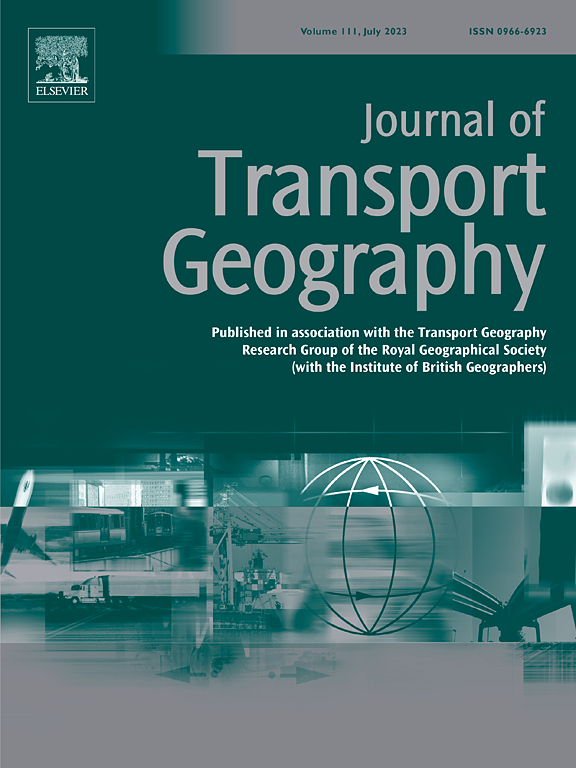Evaluating sustainable urban mobility for public transit incorporating the geospatial modeling approach
IF 5.7
2区 工程技术
Q1 ECONOMICS
引用次数: 0
Abstract
Cities have established public transit infrastructures to provide equitable services to every citizen at a low cost, thus minimizing traffic congestion. Public transportation facilities, including bus stops, urban railway stations, and terminals, provide physical convenience to passengers. Considering economic efficiency, the location selection of public transport facilities causes an imbalance in public transit accessibility within the city. Therefore, to alleviate spatial imbalance, it is necessary to devise a public transportation system evaluation method. This study uses revealed travel data to develop a competitiveness index for sustainable urban mobility in public transit. The developed competitiveness index considers two aspects: (1) mobility factors referring to in-vehicle, transfer, and waiting times, and (2) travel demand and economic factors of travel costs. Square cells of 500 m × 500 m were used to apply the geographical explanatory variables in Seoul. The developed competitiveness index ranged from −22.7 to 23.25, thus confirming the difference in sustainable mobility services between the urban center and outskirts. Notably, a spatial cell with subway stations has a high competitiveness index because subway facilities are the main factors that increase the competitiveness of public transit. Multiscale geographically weighted regression, which identifies interactions through spatial dependence and heterogeneity, is employed to analyze the causal relationship between spatial mode competitiveness and socioeconomic characteristics. The developed index is expected to contribute to the establishment of public transportation policies and systems to alleviate imbalances by identifying areas vulnerable to public transit services.
基于地理空间建模方法的可持续城市公共交通机动性评估
城市建立公共交通基础设施,以低廉的成本为每一位市民提供公平的服务,从而最大限度地减少交通拥堵。公共交通设施,包括公交车站、城市火车站和终点站,为乘客提供了物理上的便利。考虑到经济效益,公共交通设施的区位选择导致城市内公共交通可达性的不平衡。因此,为了缓解空间失衡,有必要设计一种公共交通系统评价方法。本研究利用揭示的出行数据来开发可持续城市公共交通的竞争力指数。开发的竞争力指数考虑两个方面:(1)流动性因素,即车内时间、换乘时间和等待时间;(2)出行需求和出行成本经济因素。使用500 m × 500 m的方形单元格来应用首尔的地理解释变量。发达竞争力指数在- 22.7 ~ 23.25之间,证实了城市中心和郊区可持续交通服务的差异。值得注意的是,有地铁站的空间单元具有较高的竞争力指数,因为地铁设施是提高公共交通竞争力的主要因素。利用多尺度地理加权回归分析空间模式竞争力与社会经济特征之间的因果关系,通过空间依赖性和异质性来识别相互作用。开发的指数预期将有助于制定公共交通政策和系统,通过确定易受公共交通服务影响的地区来缓解不平衡。
本文章由计算机程序翻译,如有差异,请以英文原文为准。
求助全文
约1分钟内获得全文
求助全文
来源期刊

Journal of Transport Geography
Multiple-
CiteScore
11.50
自引率
11.50%
发文量
197
期刊介绍:
A major resurgence has occurred in transport geography in the wake of political and policy changes, huge transport infrastructure projects and responses to urban traffic congestion. The Journal of Transport Geography provides a central focus for developments in this rapidly expanding sub-discipline.
 求助内容:
求助内容: 应助结果提醒方式:
应助结果提醒方式:


